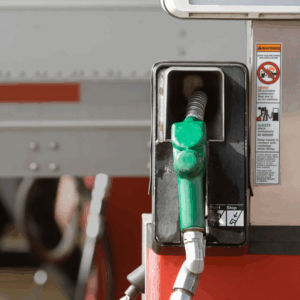 Most of us know we need to check the oil level in our vehicles on a regular basis (here is your friendly reminder to do that this week!), but many of us forget to check our antifreeze level. With winter upon us –brrrrr!!!- be sure and check both level and condition of your antifreeze.
Most of us know we need to check the oil level in our vehicles on a regular basis (here is your friendly reminder to do that this week!), but many of us forget to check our antifreeze level. With winter upon us –brrrrr!!!- be sure and check both level and condition of your antifreeze.
Cooling system failure is one of the most frequent causes of engine-related breakdowns (right behind not maintaining oil level), and the resulting repairs can be extremely costly. Did you know your engine produces 4500 degrees of cylinder heat when it is burning fuel?
Antifreeze, or coolant, is critical to keep your engine from either overheating or freezing. It maintains fluids in a liquid state by not allowing them to turn to ice (where expansion can be harmful) or to steam (where excess heat can do extreme damage).
The correct combination of water, antifreeze and coolant additives is essential for your engine to operate at the correct temperature (check your Owner’s Manual for your particular manufacturer’s recommendations). Generally, a 50/50% mixture of antifreeze and water is recommended, which protects against freezing down to -34 degrees and protects up to 263 degrees. Plain water would freeze in your radiator, and stop everything from working, and that is why antifreeze is required.
In colder areas, a 70% mixture can protect your engine down to -84 degrees Fahrenheit. But, don’t think more is better – a greater percentage (more than 50-70%) antifreeze actually offers less protection against corrosion.
Over time, harmful deposits will build up in your radiator and cooling system if your coolant is not flushed and replaced with fresh coolant. The result will be increased corrosion and ineffective heat transfer within the system. Antifreeze and coolant additives contain silicates, phosphates and/or borates that also keep the coolant solution alkaline (non-acidic), decreasing corrosion within your cooling system.
In newer cars, coolant will last for approximately 6 years, or 100,000 miles before it needs to be flushed and replaced. However, it is recommended that in older vehicles (pre-year 2000), coolant should be completely flushed and changed every 2 years, or every 30,000 miles, to maintain effectiveness.
How long has your coolant been in your car?? Now is the time to check when your coolant was last flushed and refilled, or talk to your favorite honest accurate auto technician and make sure your antifreeze level is adequate and clean. We are happy to do a complimentary check – drive safely!
| East Location | West Location |
| 3905 Tutt Blvd. | 426 Nevada Mesa View |
| Colorado Springs, CO 80922 | Colorado Springs, CO 80907 |
| Phone: (719) 638-1800 | Phone: (719) 598-6306 |



